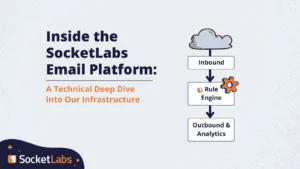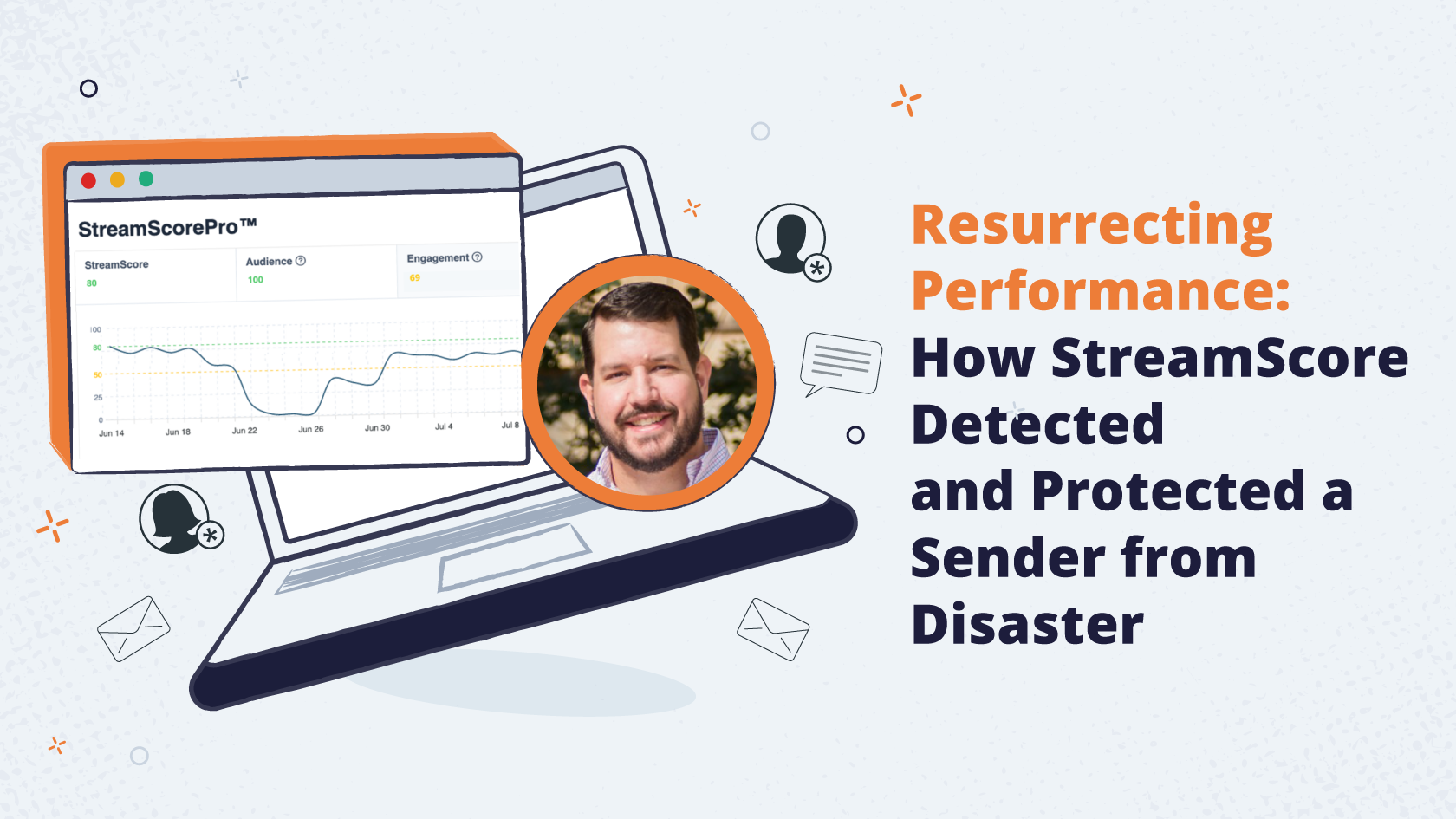
At SocketLabs, we do more than just send email.
We also help senders monitor their performance in an intuitive and meaningful way, allowing them to detect anomalies, understand the cause, and if necessary, mitigate damage and get them back on their path to peak performance.
This is exactly where our expert Brian Godiksen, Director of Customer Solutions, found himself when a large, multi-domain sender had an usual uptick in abuse complaints.
We’ll let Brian explain how this happened (spoiler: it wasn’t their fault) and what he did to determine the cause to allow them to minimize the risk of deliverability issues they were going to run into without it being fixed quickly.
Stay right here after the video to get a closer look at some screenshots with more detailed information.
Let’s Sum It Up
On the surface of the deliverability ocean, staying afloat can seem very straightforward. Keep your sending practices clean, do regular list maintenance, and constantly monitor your performance to avoid veering off course or worse, sinking.
But also like the ocean, things lurk beneath the surface and can get you really quick. Some of these things can be accidental, like forgetting to offload old addresses and finding them negatively affect your sender reputation. Some of these things are sneaky, hard-to-detect, and often hard to avoid, like pirates hijacking your email domains to send phish.
Brian noticed this client was generating a lot more abuse reports than normal, so he checked their activity. What he found from our perspective was very clear, and to our sender, it was clear, too. Here’s a closer look at what they saw.
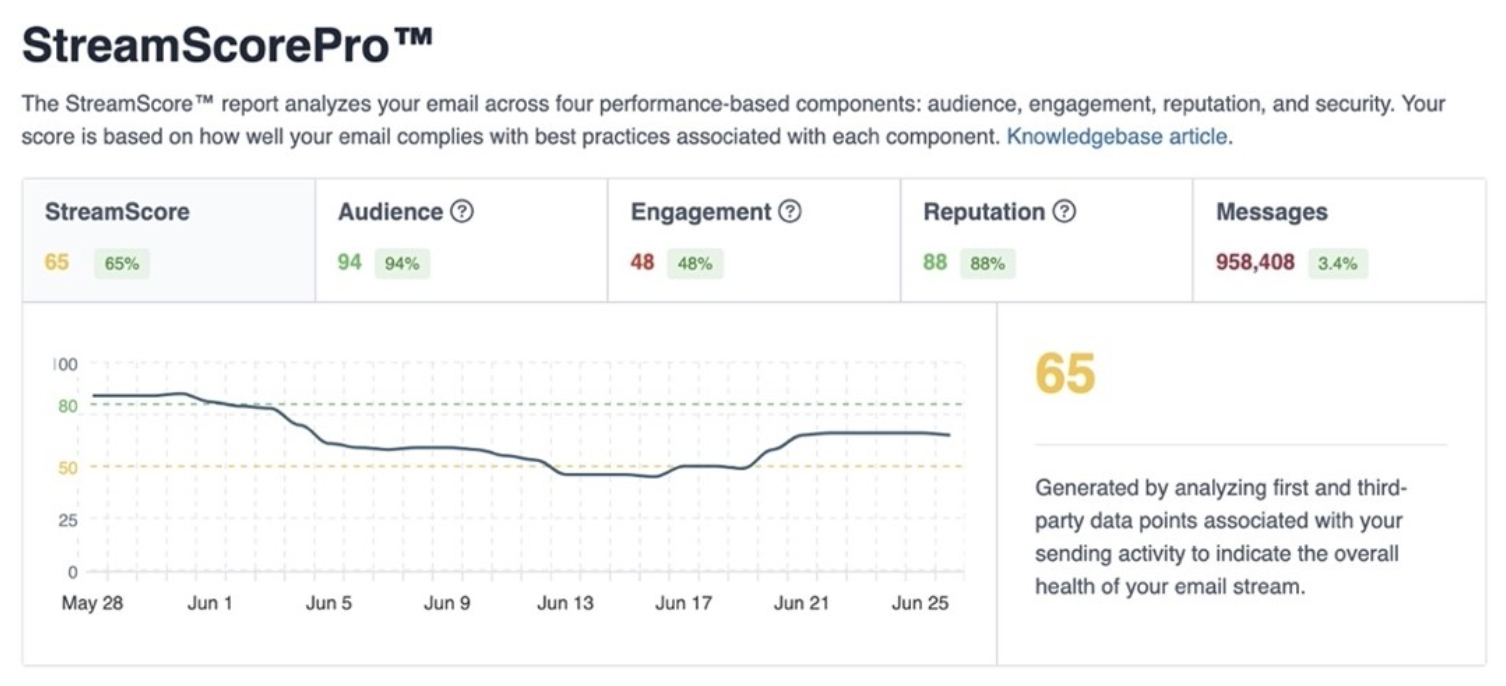
Brian can see this over a much longer timeline from his vantage point – their StreamScore absolutely tanks!
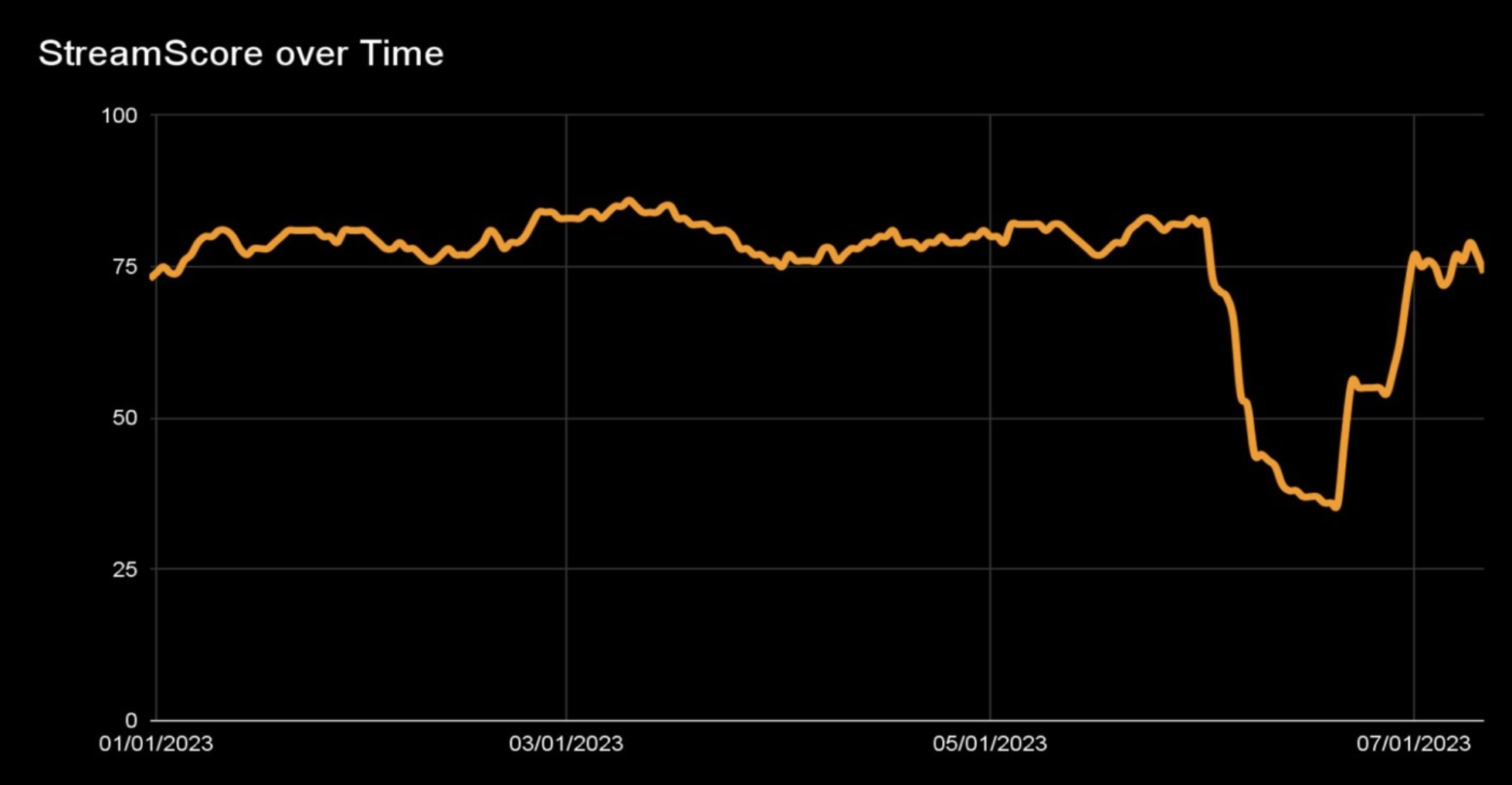
When we layer in each of their component scores, it’s really clear to see how the audience score dropped off a cliff and their StreamScore dropped along with it.
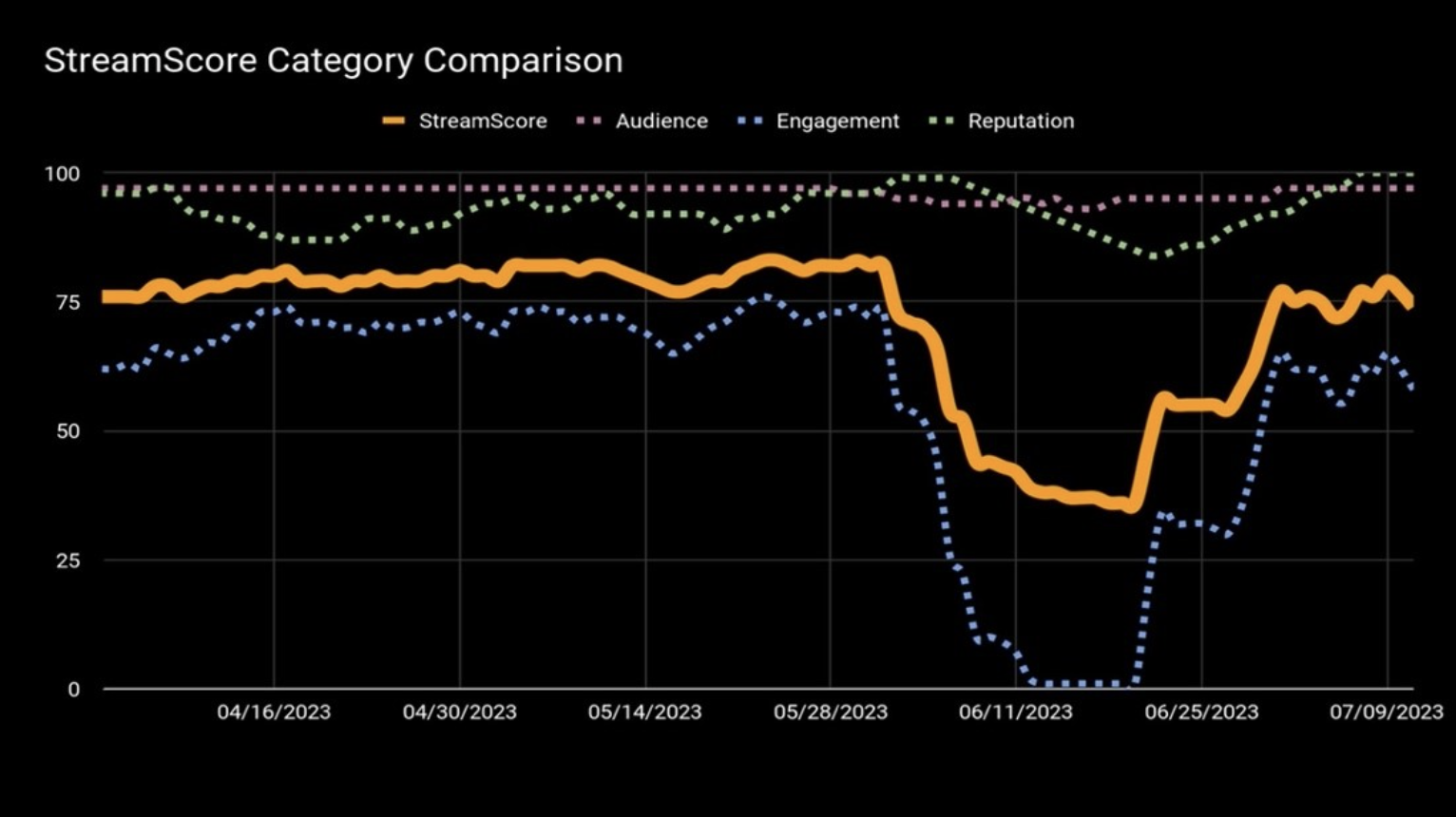
Brian figured out how these bad actors were able to hijack our sender’s domain and it turned out, like he explained, they were abusing a form our clients used as part of their business model.
Once the cause was revealed, it was only a matter of finding and implementing the fix to stop the phish. Because our sender had good email practices in place before the attacks, once the phish were removed from the equation and the risk factor was eliminated, their StreamScore and sender reputation quickly recovered. See?
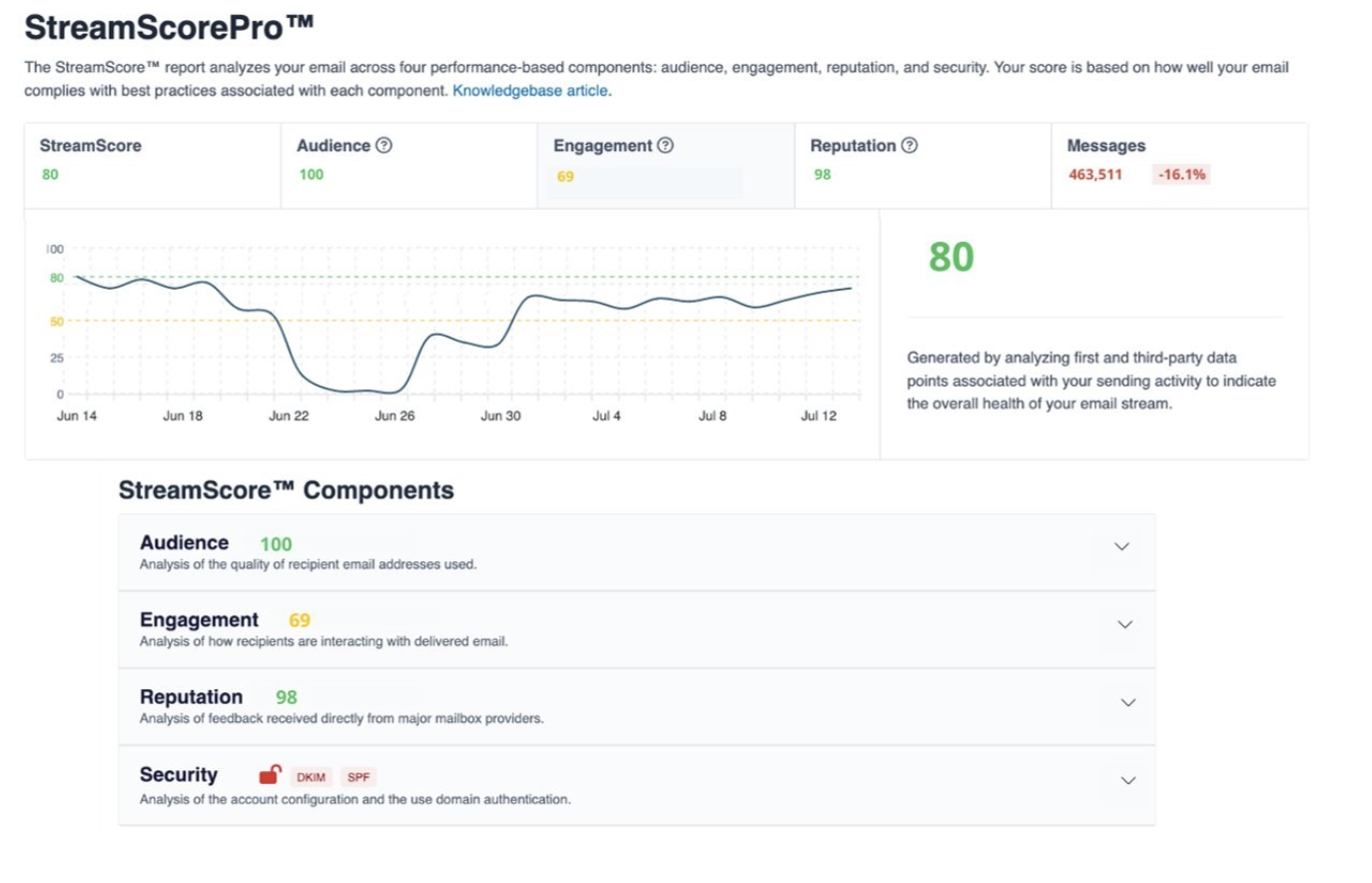
Brian did a much better and thorough job of explaining this, so we highly suggest you watch the video if you simply skipped down to this. As the person who worked on the identification and solution of the abuse situation, he has really good insight into how to avoid things like this as a sender and how you can use our StreamScore tool to keep an eye on things like this yourself.
At the end of the day, as a user you’ll have lots of questions after an incident like this, as Brian explained, and all those questions segue very directly into the questions business leaders would ask, too. Since SocketLabs’ StreamScore lays out so many pieces of data, those answers can be found (and shared) easily.
Want to Know All About StreamScore?
We recently took an in-depth look at the product itself to explain the functionality and how it works very differently than any of the reporting platforms you can find today.
If you have a different use case where you’re not so much struggling with an attack, but you’re still unhappy with your email performance, you might be interested in reading this use case in which email newsletters were going to the spam folder with Gmail because they were not getting enough engagement. Brian helped them work through the issue using the features of StreamScore to get them on the path to a better score and better engagement in no time.
If you’re ready to take the plunge, go ahead and get sending with our Pro plan where you can access all the features of StreamScore plus all the other features of SocketLabs in one single platform.




